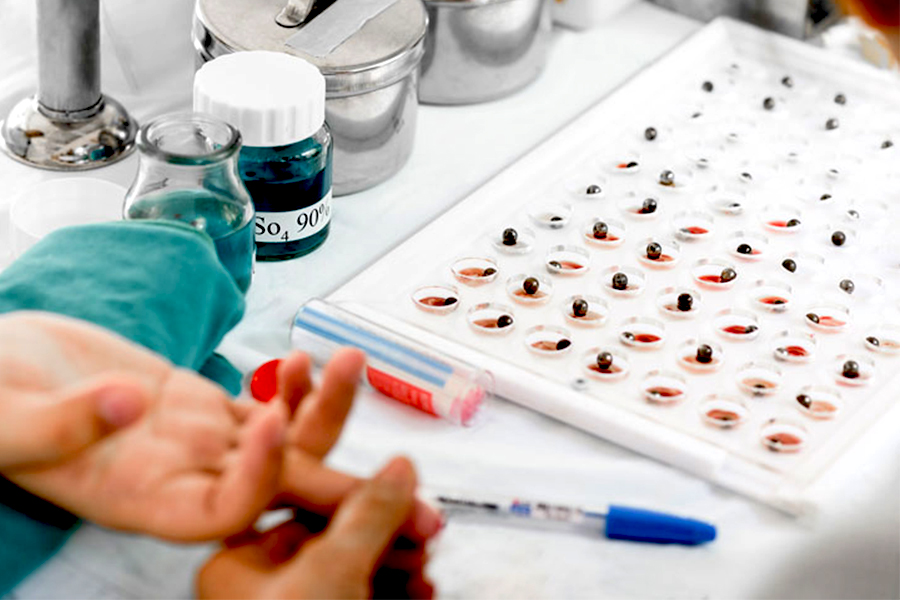
This Is Sofia’s Sickle Cell Anaemia Story and Lessons
Sofia, is a 300-level student in the University who has just attempted suicide and it was her second attempt. Her mother was more afraid and worried than with her last attempt but she had no one to blame but herself for all the pain her daughter was going through.
Sofia is a beautiful 20-year-old girl studying Microbiology at university and she is sickle cell with the most severe crisis. It seems like each year, the pain from her crisis increases and it was now unbearable. Sometimes she had to use crutches to moves around, and she had to live off of medications. She was paying the consequences of her parent’s forbidden love. Her parents got married knowing that they were not biologically compatible. They claimed to be so much in love that they couldn’t do without each other and got married against every medical advice.
This love slowly faded away from watching their little girl go through terrible pains with no solution. They thought as Sofia got older her crisis would reduce but it rather grew worse. They felt responsible for all pains and misfortunes in their daughter’s life and Sofia’s attempted suicides only broke their heart further.
What is Sickle cell anaemia?

Sickle cell anaemia is an inherited red blood cell disorder in which there aren’t enough healthy red cells to carry oxygen throughout your body.
The normal red blood cells are discs-like, round, flexible and can move easily through blood vessels. In sickle cell anaemia, the red blood cells are shaped like sickles or crescent moons, are rigid, sticky and can get stuck in small blood vessels which can slow or block blood flow and oxygen to that part of the body. This cause pain and tissue damage.
Cause of Sickle-cell Anaemia
Sickle cell anaemia is an inherited disease caused by a defect in a gene. A person will be born with sickle cell disease only if two defective genes are inherited, one from the mother and one from the father. A person who inherits just one gene is healthy and said to be a “carrier” of the disease. A carrier has an increased chance of having a child with sickle cell disease if he or she has a child with another carrier. For parents who are each carrier of a sickle cell gene, there is a 1 in 4 or a 25 % chance of having a child with sickle cell disease.
What are the symptoms of Sickle cell disease?
The following is a list of symptoms and complications associated with sickle cell disease. However, each person may experience symptoms differently. Symptoms and complications may include:
- Anaemia. Because sickled cells are short-lived or destroyed, there are less red blood cells available in the body. This results in anaemia. Severe anaemia can make you feel dizzy, short of breath, and tired.
- Pain crisis, or sickle crisis. This occurs when the flow of blood is blocked to an area because the sickled cells have become stuck in the blood vessel. The pain can occur anywhere, but most often occurs in the chest, arms, and legs. Infants and young children may have painful swelling of the fingers and toes. Interruption in blood flow may also cause tissue death.
- Acute chest syndrome. This occurs when sickling occurs in the chest. This can be life-threatening. It often occurs suddenly, when the body is under stress from infection, fever, or dehydration. The sickled cells stick together and block the flow of oxygen in the tiny vessels in the lungs. It resembles pneumonia and can include fever, pain, and a violent cough.
- Splenic sequestration (pooling). Crises are a result of sickle cells pooling in the spleen. This can cause a sudden drop in haemoglobin and can be life-threatening if not treated promptly. The spleen can also become enlarged and painful from the increase in blood volume.
Complications
- Stroke. This is another sudden and severe complication of people with sickle cell disease. The misshapen cells can block the major blood vessels that supply the brain with oxygen. Any interruption in the flow of blood and oxygen to the brain can result in severe brain damage.
- Jaundice, or yellowing of the skin, eyes, and mouth. Jaundice is a common sign and symptom of sickle disease. Sickle cells do not live as long as normal red blood cells and, therefore, they are dying faster than the liver can filter them out. Bilirubin (which causes the yellow colour) from these broken down cells builds up in the system causing jaundice.
How is sickle cell disease diagnosed?
Along with a complete medical history and physical exam, you may have blood and other tests. The most common blood test to diagnose sickle cell disease is a Genotype test.

How is sickle cell disease managed and treated?
Sickle cell disease is a life-long condition. Although the complications of sickle cell disease may not be able to be prevented entirely, it can be managed. Early diagnosis and prevention of complications is critical in sickle cell disease treatment. Treatment aims to prevent organ damage including strokes, prevent infection, and treat symptoms. Treatment may include:
- Pain medications. This is for sickle cell crises.
- Drinking plenty of water daily (8 to 10 glasses). This is to prevent and treat pain crises.
- Blood transfusions. These may help treat anaemia and prevent stroke.
- Vaccinations and antibiotics. These are used to prevent infections.
- Folic acid. Folic acid will help prevent severe anaemia.
- Bone marrow transplant. Bone marrow transplants can cure some people with sickle cell disease. The decision to have this procedure is based on the severity of the disease and ability to find a suitable bone marrow donor. These decisions need to be discussed with your doctor and are only done at specialized medical centres.
Reference: Johns Hopkins School of Medicine, London, United Kingdom

Obi Simon
Nice Article Angela Omaji… It was really Educating.
Blessing Okeke
Well detailed article.
Igoche
Thank you so much learnt a lot reading this
Patrick
Wow very impressive and educating i most say.keep it up
Udoka
Well written
Ankyese Fanen Francis
A resounding piece.
We are proud of you.
Dare
Well done Ms Angela,
This is educating. Thank you ma
Dre
Well done Ms Angela.
This is educating.
Thank you.
Emmanuel Chukwu
Well Articulated!
I Commend You For You Excellent Article.
Intending Couples, Please Do The Needful Before Saying, “I Do”